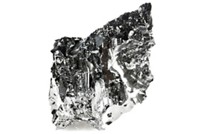Advertisement
Grab your lab coat. Let's get started
Welcome!
Welcome!
Create an account below to get 6 C&EN articles per month, receive newsletters and more - all free.
It seems this is your first time logging in online. Please enter the following information to continue.
As an ACS member you automatically get access to this site. All we need is few more details to create your reading experience.
Not you? Sign in with a different account.
Not you? Sign in with a different account.
ERROR 1
ERROR 1
ERROR 2
ERROR 2
ERROR 2
ERROR 2
ERROR 2
Password and Confirm password must match.
If you have an ACS member number, please enter it here so we can link this account to your membership. (optional)
ERROR 2
ACS values your privacy. By submitting your information, you are gaining access to C&EN and subscribing to our weekly newsletter. We use the information you provide to make your reading experience better, and we will never sell your data to third party members.
Materials
Scientists Go To Great Depths For Rare-Earth Elements
by Elizabeth K. Wilson
July 11, 2011
| A version of this story appeared in
Volume 89, Issue 28
Deep-sea mud from the Pacific Ocean contains enough lanthanide metals and yttrium to meet the world’s growing demand for these essential elements used in electronic devices and equipment, researchers in Japan report (Nat. Geosci., DOI: 10.1038/ngeo1185). More than 90% of these metals are currently mined in China because of the low cost of extraction and minimal environmental regulations. But China’s own increasing need for the elements has threatened to create a shortage in the rest of the world (C&EN, May 16, page 28). Although previous geological research has shown that oceanic mud contains rare-earth elements, the distribution and concentration of the metals had not been mapped. To that end, Yasuhiro Kato of the University of Tokyo and colleagues took 2,000 ocean sediment core samples from 78 sites in the Pacific Ocean. Using X-ray fluorescence and inductively coupled plasma mass spectrometry they found the sediments were rich in elements such as dysprosium and europium. The team estimates that a single square kilometer in the central North Pacific contains enough rare-earth metals to supply one-fifth of the world’s annual needs and thus “constitutes a highly promising huge resource for these elements.”





Join the conversation
Contact the reporter
Submit a Letter to the Editor for publication
Engage with us on Twitter